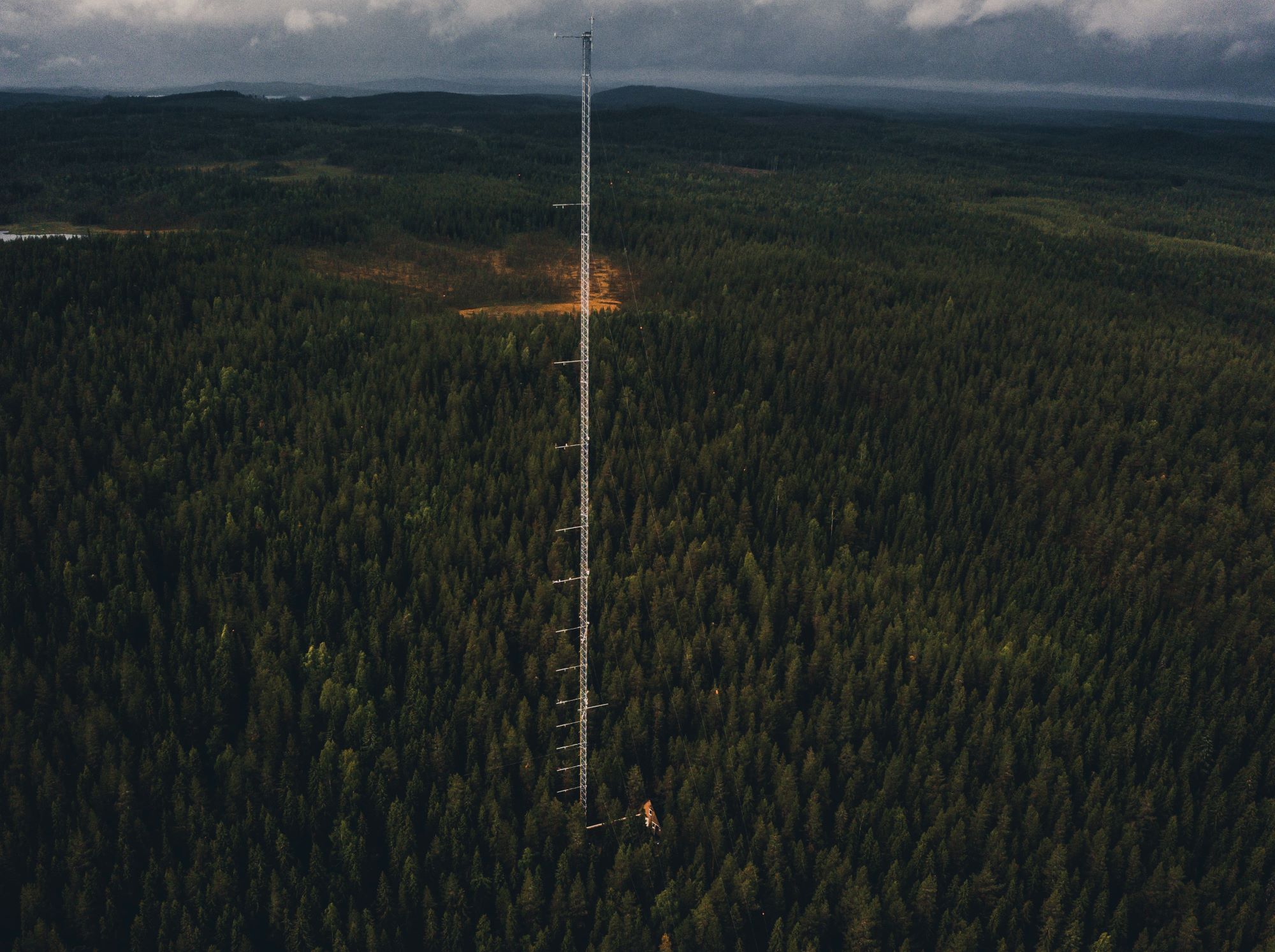
A study has found that contemporary managed forest landscape in northern Sweden acts as a carbon sink even after accounting for carbon loss due to logging. This study was the first of its kind to determine the carbon balance of a northern forest landscape by combined land and water measurements of carbon. The research article titled “The Net Landscape Carbon Balance—Integrating terrestrial and aquatic carbon fluxes in a managed boreal forest landscape in Sweden” was published in Global Climate Biology in January 2020 and uses data collected from Svartberget, a combined ICOS atmospheric and ecosystem station.
Climate change in the northern regions
Climate change is projected to be particularly severe in northern regions. The aim of this study was to determine the net carbon balance resulting from the various sources and sinks over 68 square kilometers of a typical northern forest landscape comprised of different forests, mires, lakes and streams. Both water- and land-based ecosystems may act as either sinks or sources of carbon dioxide (CO2) and other greenhouse gases. Carbon is also exchanged between these different types of ecosystems. Because of this complexity, it is difficult to estimate the overall carbon and greenhouse gas balances of managed forest landscapes and their potential for climate change mitigation.
The researchers found that across the various types of ecosystems this landscape acted as a carbon sink accumulating carbon each year, even after accounting for the carbon loss through harvest. In addition, they found that variation in temperature and sun radiation, type of land (forest vs. mire) and management practices (for example clearcutting) all had considerable effects on the carbon balance over time and at different locations.
Forest landscapes are not closed carbon sinks
Interestingly, they also found a small but significant carbon loss in the form of dissolved organic and inorganic carbon that gets washed out from the landscape by rivers and streams. This is an important finding as most people think of forests as closed systems where carbon, once absorbed from the atmosphere, remains within the ecosystem until removed by tree cutting or other management practices. It is important to be aware of these carbon leaks in order to accurately quantify how forest ecosystems can act as carbon sinks. “The annual net landscape carbon balance is still more largely determined by other components, such as CO2 uptake by the landscape and harvest export through forest management,” says Dr. Jinshu Chi from the Department of Forest Ecology and Management at the Swedish University of Agricultural Sciences and the lead author of this study.
“Our findings suggest that contemporary forest management in northern Sweden results in carbon storage and thus helps mitigating climate change. This study further promotes the use of tall tower eddy covariance measurements across the ICOS network to obtain direct carbon exchange estimates at the landscape scale,” says Dr. Matthias Peichl from the Department of Forest Ecology and Management, Swedish University of Agricultural Sciences and the head of this project
Copyright ICOS, photo of the Svartberget station tower by Konsta Punkka